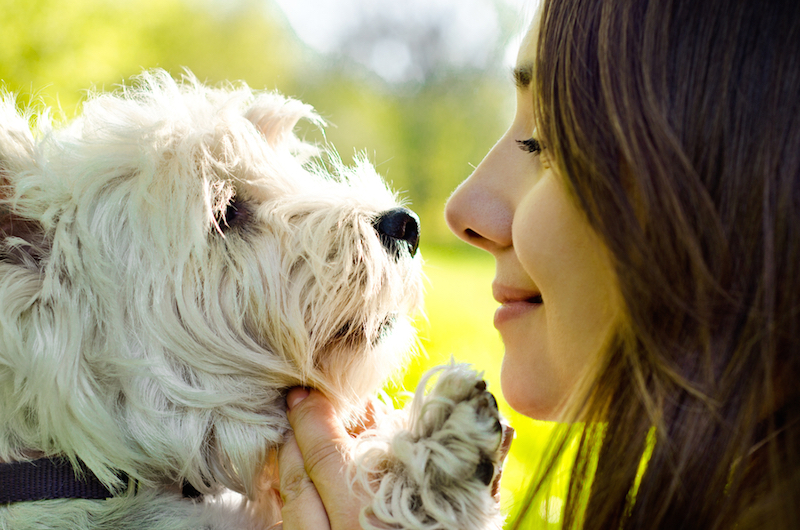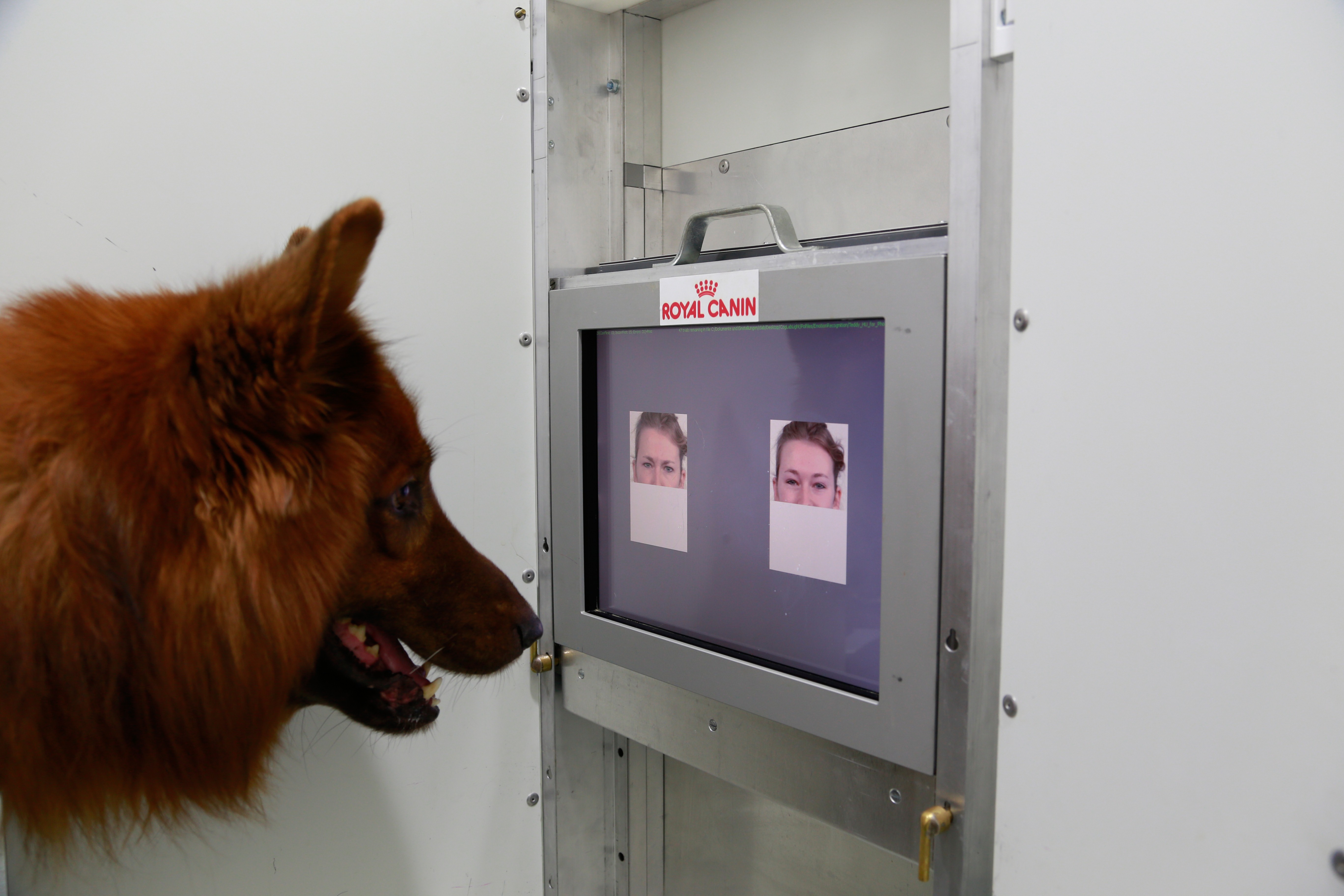Dogs Can Tell Happy or Angry Human Faces

If you ever get the impression that your dog can "tell" whether you look content or annoyed, you may be onto something. Dogs may indeed be able to discriminate between happy and angry human faces, according to a new study.
Researchers trained a group of 11 dogs to distinguish between images of the same person making either a happy or an angry face. During the training stage, each dog was shown only the upper half or the lower half of the person's face.
The investigators then tested the pups' ability to discriminate between human facial expressions by showing them different images from the ones used in training. The dogs were shown either the other half of the face used in the training stage, the other halves of people's faces not used in training, a face that was the same half as the training face but from a different person, or the left half of the face used in the training stage.
The researchers found that the dogs were able to pick the angry or happy face by touching a picture of it with their noses more often than one would expect by random chance.

The study showed the animals had figured out how to transfer what they learned about human faces during training to new faces in the testing stage, the researchers said. [10 Things You Didn't Know About Dogs]
"We can rule out that the dogs simply discriminated [between] the pictures based on a simple salient cue, such as the visibility of teeth," said study author Corsin Müller, an animal behavior researcher at Messerli Research Institute at the University of Veterinary Medicine in Vienna.
"Instead, our results suggest that the successful dogs realized that a smiling mouth means the same thing as smiling eyes," and the same rule applies to an angry mouth having the same meaning as angry eyes, Müller said. (The researchers originally recruited 24 dogs for the study, but 13 of them dropped out for various reasons before the researchers started training them, for instance, because their owners did not have time to bring the animals to the lab.)
Get the world’s most fascinating discoveries delivered straight to your inbox.
Previous research had demonstrated that dogs are able to distinguish between different expressions in people they are familiar with, even if the animals are shown only part of the face, such as the eye region. Researchers had also previously attempted to see whether dogs could tell the difference between emotional expressions of human faces, but the results were inconclusive.
"With our study, which was inspired by these previous attempts, we think we can now confidently conclude that at least some dogs can discriminate human facial expressions," Müller told Live Science.
At this point, it is not clear why dogs seem to be equipped with the ability to recognize different facial expressions in humans, the researchers said. "To us, the most likely explanation appears to be that the basis lies in the life-long co-habitation of the dogs with humans, during which the dogs get a lot of exposure to human facial expressions," and this exposure has provided them with many opportunities to learn to distinguish between them, Müller said.
The study was published today (Feb. 12) in the journal Current Biology.
Follow Agata Blaszczak-Boxe on Twitter. Follow Live Science @livescience, Facebook & Google+. Originally published on Live Science.
